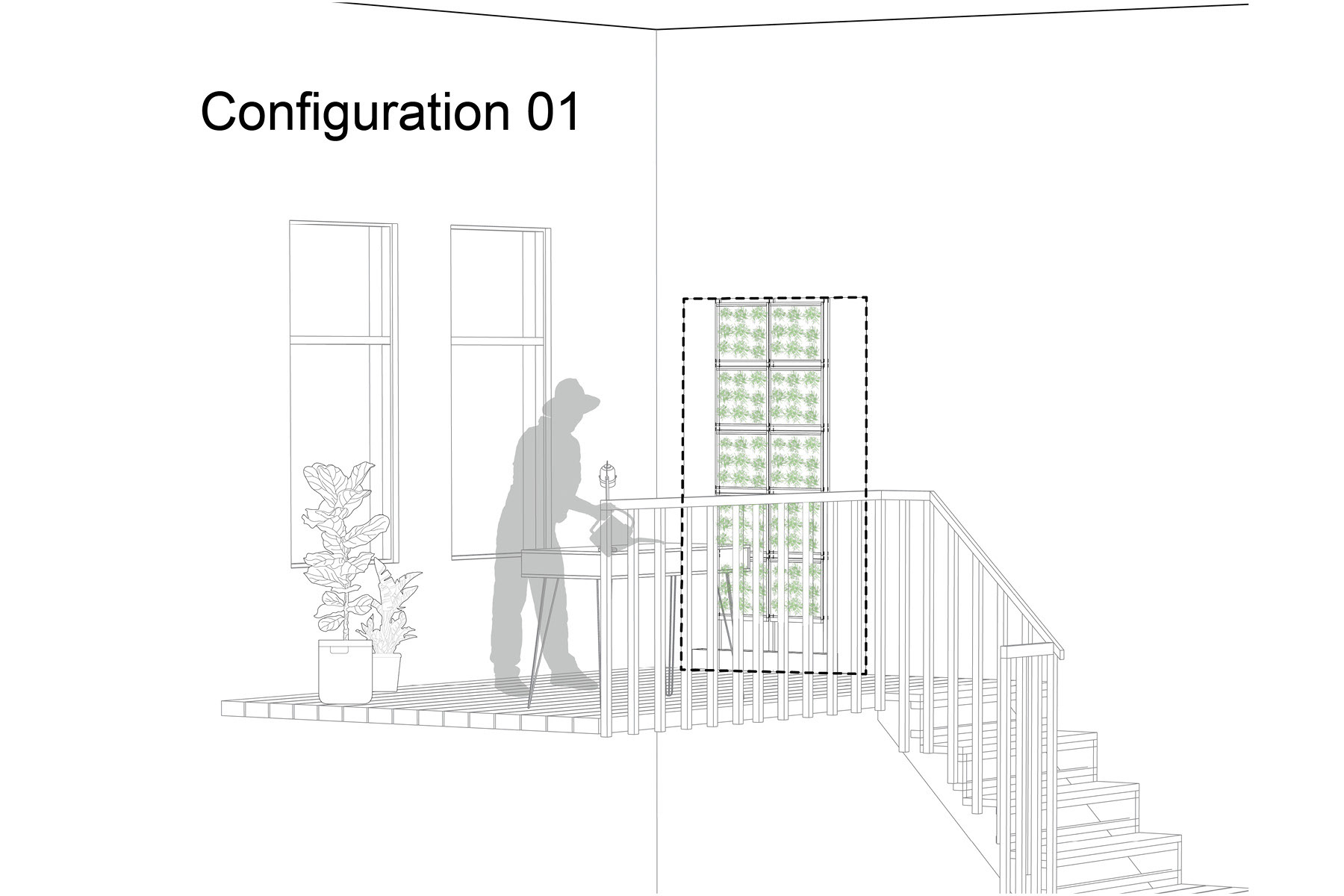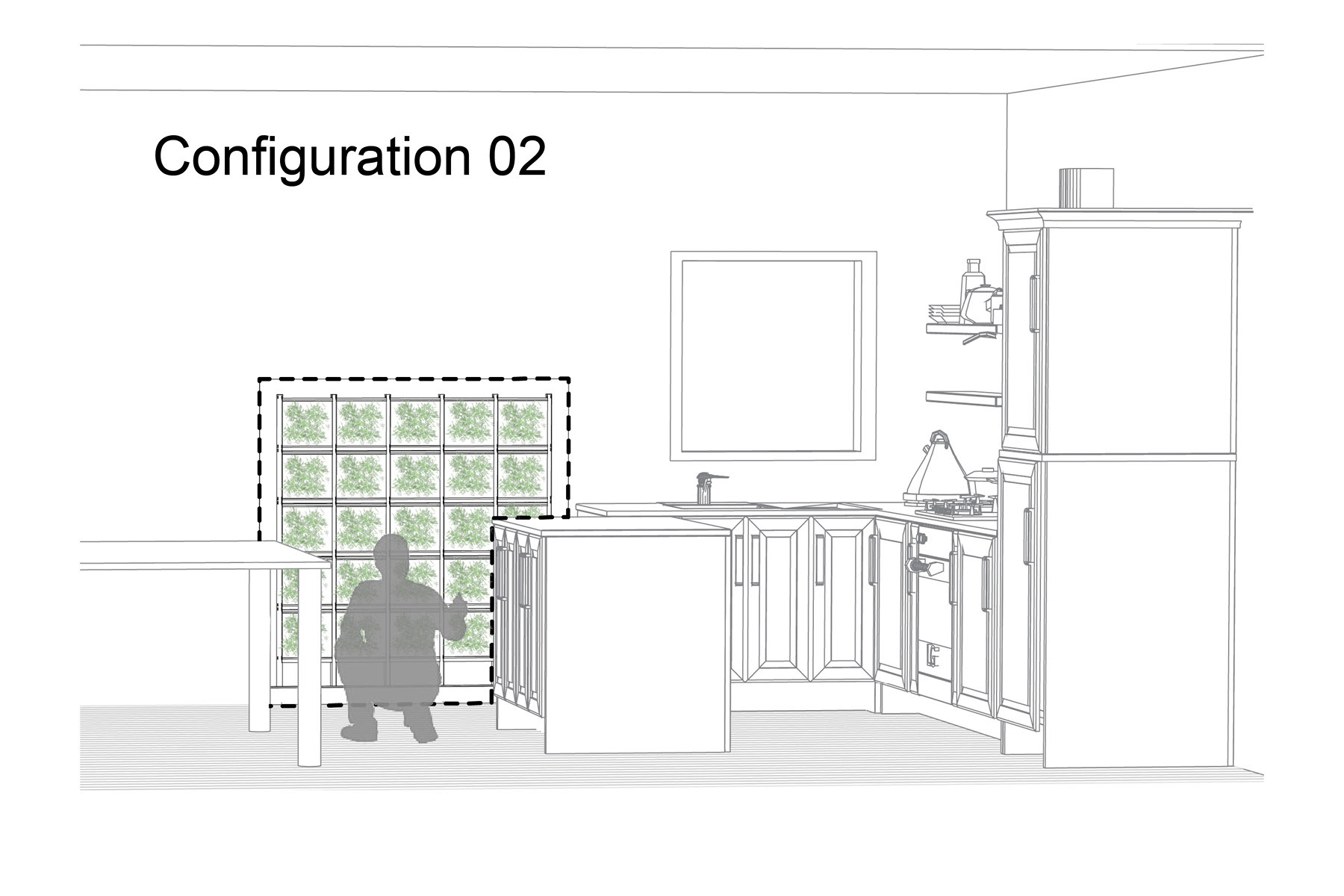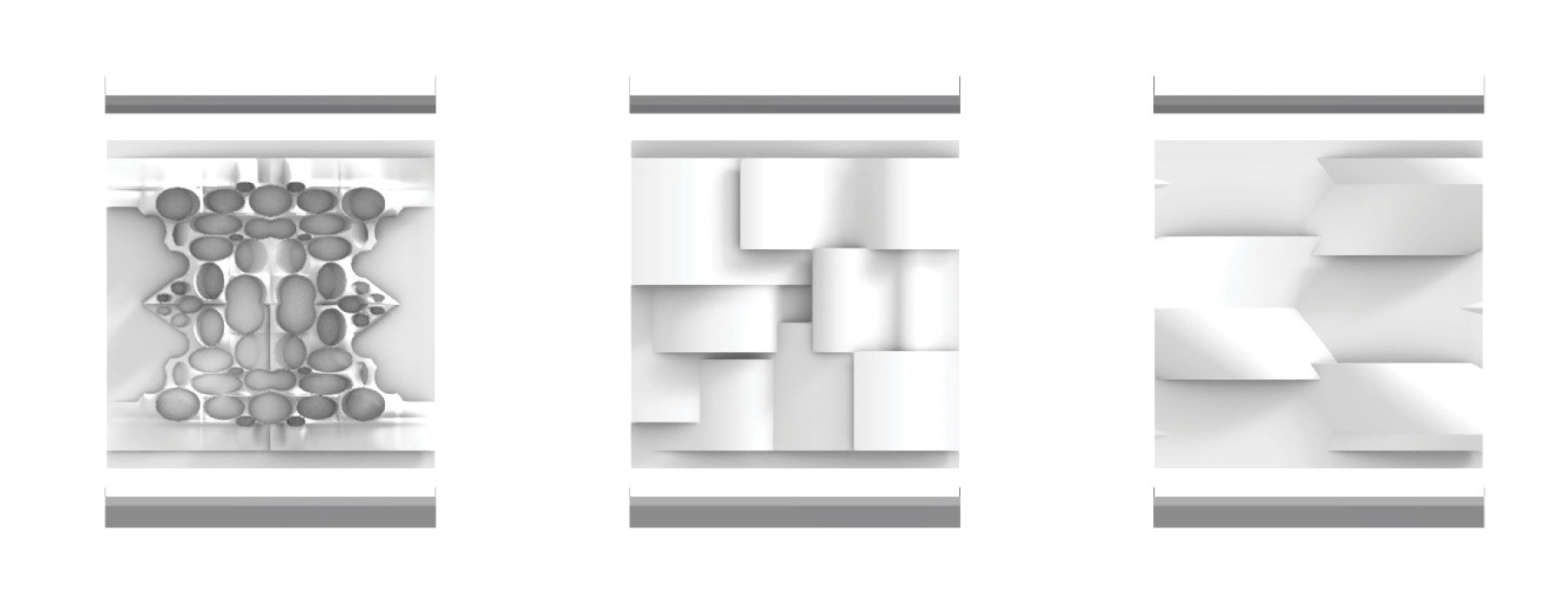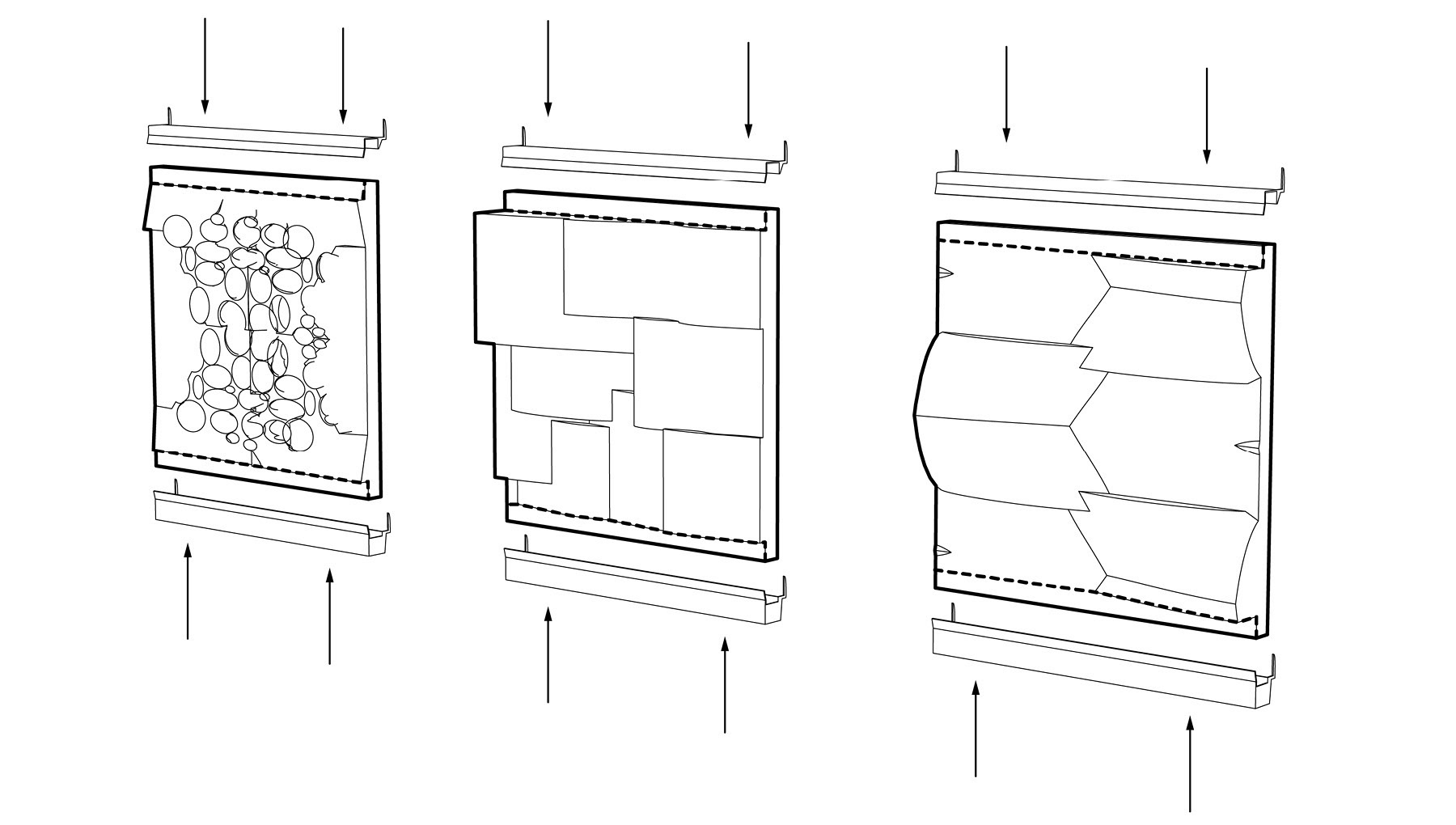As urban populations continue to grow, so does the need to address local issues including food security and accessibility. Green walls, particularly those used in Vertical Farming (VF), have potential for abundance in urban environments and may also provide secondary benefits relating to equity and community engagement. Coupled with advancements in 3D printing technology and the advent of bio-composite filaments, this study aims to utilize 3D printing to establish a baseline for cultivating food crops in 3D printed substrate for interior applications. Test panels were fabricated using three different filament types: 100% pure PLA (polylactic acid), PLA with 11% wood powder, and PLA with 30% wood powder. Our findings show that there is a statistically significant difference in plant growth between filament types, suggesting that the higher the percentage of organic material present within composite filament, the higher the chance for wicking and moisture retention to occur, thereby increasing plant production and viability.
This research used an experimental approach to assess the germination and growth of arugula microgreens (Eruca vesicaria L.) in three, commercially available filament types from two different manufacturers: 100% pure PLA (polylactic acid), PLA with 11% wood powder, and PLA with 30% wood powder. After determining an optimal substrate design utilizing a gyroid infill pattern, three successive growth trials were conducted to test the following variables: growth in a vertical orientation, varied density of the 3D printed substrate, and increased panel scale with and without fertigation.
The results of the plant germination trials showed that while all filament types could support microgreen growth, those with wood fillers had higher rates of germination and biomass production. Though the amount of harvestable yield was not found to be statistically different between filament types or fertigation treatment, the increased production of biomass found in wood bio-composite filaments suggest they are able to facilitate shorter plant establishment periods and encourage root growth. Additionally, moisture readings taken during the third trial suggest that the percentage of wood infill within a filament is directly correlated to the substrate’s ability to retain moisture. The study also explored larger architectural applications including the design of a modular wall assembly using 3D printed panels. Given the increased accessibility of 3D printing via institutions such as public libraries, makerspaces, and third-party printing companies, this study suggests that individuals and local communities alike can use this technology to fabricate novel food cultivation systems.
After various tests of infill patterns and varying densities, a gyroid patterned infill at 20% density was chosen for its high surface area, potential for increased thermal performance, porosity, and lightweight design. The pictures above shows the varied density design used in the study. Rather than having a consistent density with the gyroid patterned infill, ¼-inch was printed at 20% density, and the other ¼-inch was printed at 30%. This variation in density was theorized to increase water retention, and possibly reduce overall irrigation needs.
9" x 9" panel made of PLA with 30% wood powder
JMP Pro 17 software was used to conduct statistical analysis of collected data. Because shoot data was found to be not normally distributed and we had a relatively small sample population, a one-way ANOVA was run along with a nonparametric Kruskal-Wallis test to assess whether there was a statistically significant difference between biomass growth, filament type, and shoot length. Additionally, because we were interested in looking at moisture level not only by filament type and fertigation treatment, but also by quadrant, a fit model was produced using the standard least squares personality in JMP to analyze the results in a correlation analysis.
A fixed wall installation that uses panels in a modular configuration was designed to visualize how this technology may be implemented at a larger scale. The modular assembly is only limited to the amount of wall space available and can be sized up or down dependent upon the desired amount of mounted panels.
the scale and context in which urban agriculture is implemented has direct effects on the resources and energy needed to sustain that system. The growth trials conducted in this study were all grown in an indoor environment in natural daylighting conditions and were grown independently of other panels. While panels did demonstrate the ability to support multiple growth cycles with little to no impact on structural integrity of the substrate, long term use in interior as well as exterior applications is recommended to fully analyze the limitations of using PLA based wood biocomposites as a growing substrate. Replicate growth tests using the same panels and test prints may reveal the impact of residual root matter remaining within the substrate.
As the current study was focused on microgreens, plants with short lifespans that are reduced even further upon harvest, small scale applications in homes, local markets, or even restaurants are optimal for this type of growth model



